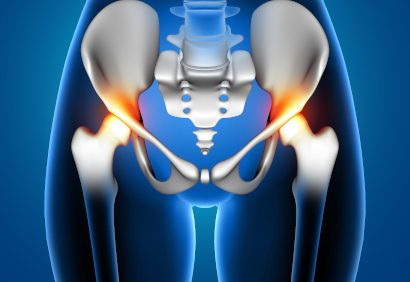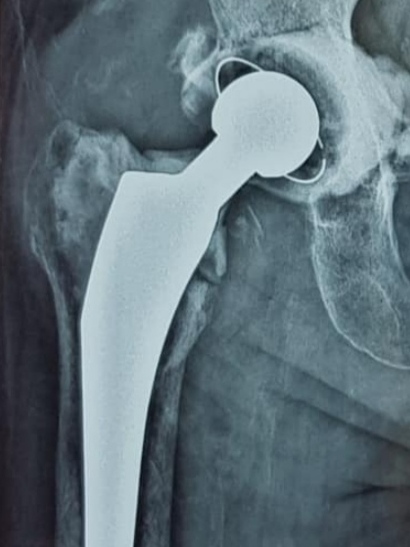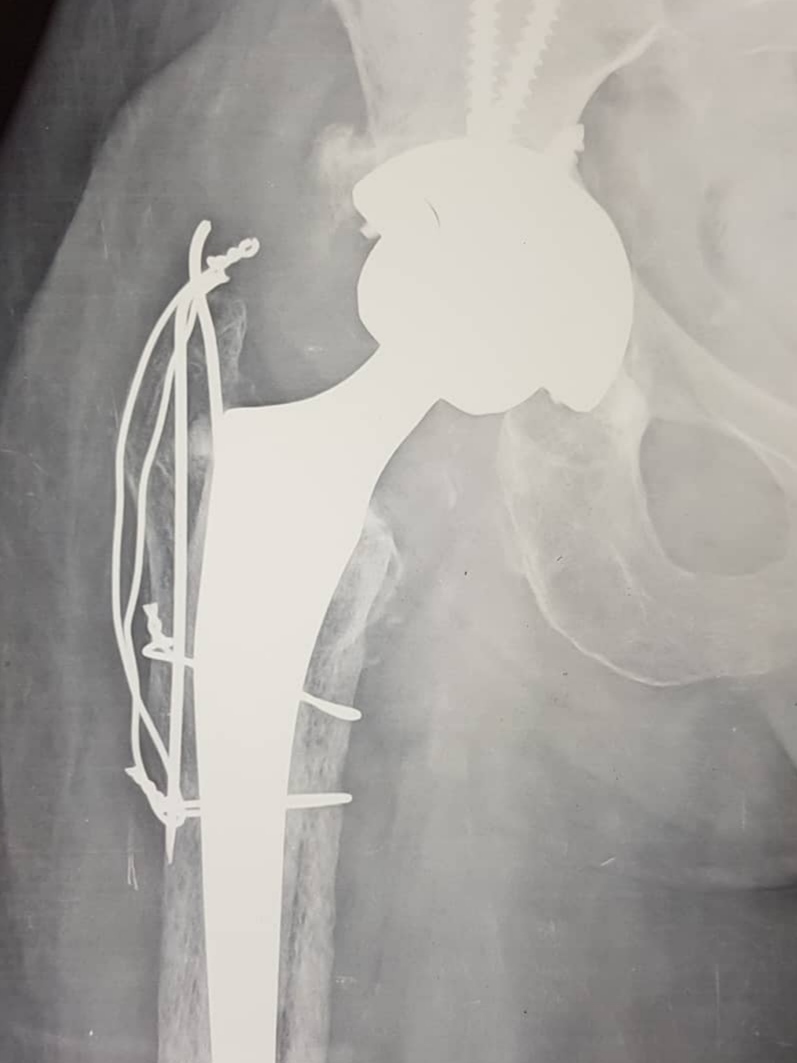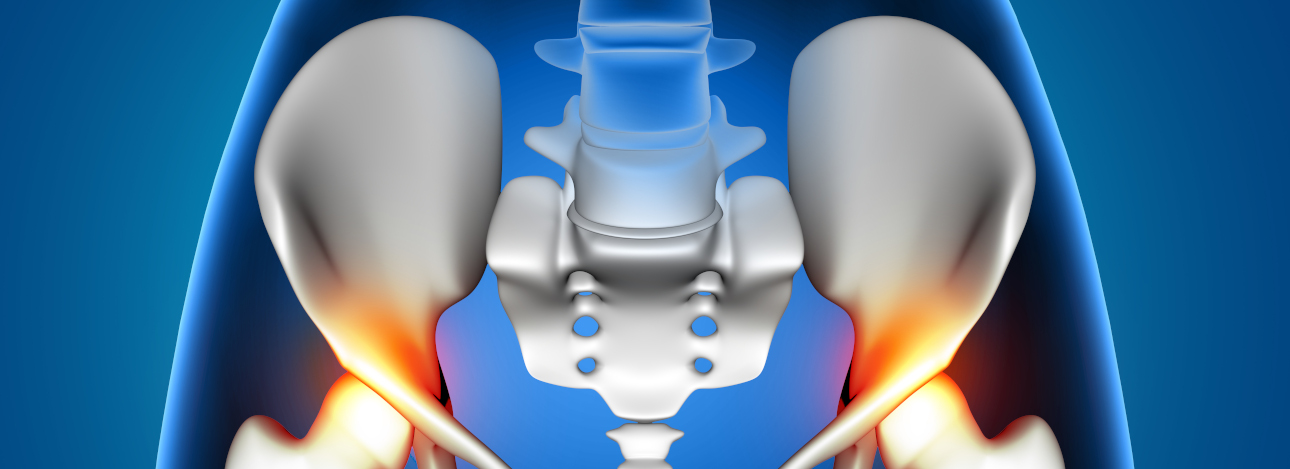Jump To:
Fast Facts
- Approximate Length of Stay: 2 Weeks
- Hospital Stay: 2-4 Days
- Operation Duration: 2-4 Hours
- Postoperative Care: Physiotherapy

Total Hip Replacement ( Total Hip Arthroplasty )
“Total Hip Arthroplasty” (THA), commonly known as a “Total Hip Replacement”, is a surgical procedure where a damaged or diseased hip joint is replaced with an artificial joint, or prosthesis. This surgery is typically recommended for individuals with severe hip pain and disability due to conditions like osteoarthritis, rheumatoid arthritis, or hip fractures.
Indications for Total Hip Arthroplasty
- Osteoarthritis: The most common reason for THA, where the cartilage cushioning the hip joint wears down, leading to pain and stiffness.
- Rheumatoid Arthritis: An autoimmune condition that causes inflammation in the joints, leading to pain and joint damage.
- Hip Fractures: Especially in older adults, fractures can necessitate hip replacement if the bone cannot be effectively repaired.
- Avascular Necrosis: A condition where the blood supply to the hip bone is reduced, causing the bone to die and leading to joint damage.
- Hip Dysplasia: A congenital or developmental condition where the hip joint is malformed, often leading to arthritis.
Procedure Overview
-
Preoperative Preparation
-
-
- Evaluation: Before surgery, a thorough evaluation, including physical examination, imaging (like X-rays or MRIs), and blood tests, is conducted.
- Pre-surgical Planning: This includes assessing the patient’s overall health, discussing the type of prosthesis, and planning for post-operative care.
- Anesthesia: The surgery is usually performed under general anesthesia or spinal/epidural anesthesia.
-
-
Surgical Procedure
-
-
- Incision: A surgical incision is made on the side or back of the hip.
- Removal of Damaged Joint: The surgeon removes the damaged femoral head (the ball of the hip joint) and acetabulum (the hip socket).
- Implantation of Prosthesis:
- Acetabular Component: A cup-shaped prosthesis is implanted into the hip socket, sometimes with screws or cement.
- Femoral Component: A metal or ceramic ball attached to a stem is inserted into the femur (thigh bone).
- Alignment and Fixation: The new joint is carefully aligned, and the components are secured.
- Closure: The incision is closed with sutures or staples, and a dressing is applied.
-
-
Prosthesis Types
-
- Cemented vs. Cementless: Cemented prostheses are fixed in place with a special bone cement, while cementless prostheses rely on bone growth into the surface of the implant for stability.
- Materials: The components can be made from various materials, including metal, ceramic, and plastic. The choice depends on factors like age, activity level, and surgeon preference.
Recovery and Rehabilitation
- Hospital Stay: Patients typically stay in the hospital for a few days after surgery.
- Pain Management: Pain is managed with medications, and physical therapy begins soon after surgery.
- Rehabilitation:
- Physical Therapy: This is crucial for regaining strength, mobility, and function. It usually starts with gentle exercises and progresses to walking with assistance.
- Mobility Aids: Crutches, walkers, or canes may be needed temporarily.
- Return to Activities: Most patients can resume normal activities within 6 to 12 weeks, though full recovery can take up to a year. High-impact activities may be restricted to prolong the life of the implant.
Risks and Complications
- Infection: Though rare, infections can occur and may require additional treatment or surgery.
- Blood Clots: Patients are often given blood thinners to reduce the risk of deep vein thrombosis (DVT).
- Dislocation: The new hip joint may dislocate, especially in the first few months post-surgery.
- Leg Length Discrepancy: In some cases, there may be a noticeable difference in leg length after surgery.
- Wear and Loosening: Over time, the artificial joint may wear out or loosen, which might require revision surgery.
Longevity and Outcomes
- Durability: Modern hip prostheses are designed to last 15 to 20 years or more, depending on the patient’s activity level and other factors.
- Improvement in Quality of Life: Most patients experience significant pain relief, improved mobility, and a better quality of life after THA.
Considerations
- Age and Activity Level: Younger, more active patients may require revision surgery later in life.
- Surgeon Experience: Choosing a skilled and experienced orthopedic surgeon is crucial for the best outcomes.
“Total Hip Arthroplasty” is a highly effective treatment for severe hip joint damage, offering significant pain relief and improved mobility for patients. With proper care and rehabilitation, most patients can expect to regain a high level of function and enjoy an active lifestyle post-surgery. SHIFA helps you achieve the best possible results from your surgery by utilizing the services of expert orthopedic surgeons.
Compare Before and After Images


Total Hip Replacement ( Total Hip Arthroplasty )
Frequently Asked
Questions
Can I walk after Hip Replacement Surgery?
Most patients can start walking the same day as their hip replacement surgery. You can put as much weight on your new hip as is comfortable. Patients can walk unaided within one month of hip replacement surgery, and many even sooner than that. Every patient has a slightly different experience, and this timing may be affected by what type of hip replacement you have.
Is Hip Replacement Surgery painful?
Hip Replacement Surgery is usually less painful than the arthritis pain you had before surgery, and the pain is typically well controlled with medication after surgery you can expect some discomfort after surgery, but it’s usually manageable with painkillers. The pain is different from the arthritis pain you had before surgery, and it should improve day by day.
Do we need physiotherapy after Orthopedic Surgeries?
Following your surgery physiotherapy is just as important and will help to restore the movement of your hip or knee and strengthen the surrounding muscles. Strengthening your muscles not only helps with movement, but it will also protect your joint against future injury.
Why choose SHIFA for Orthopedic Surgery?
By using the best orthopedic specialists, SHIFA provides all your surgical needs, including neck, hand, hip, and foot surgeries, etc. Also, all post-operative care needs, such as physiotherapy and high-quality rehabilitation, will be provided to you by SHIFA in the shortest possible time.
SHIFA's Departments
Related Services
Featured Services

Gastric Bypass Surgery
“Gastric Bypass Surgery”, also known as “Roux-en-Y Gastric Bypass”, is a type of weight-loss surgery that helps patients lose a

Rhinoplasty
“Rhinoplasty”, commonly known as a “Nose Job,” is a surgical procedure to alter the shape or function of the nose.<br

Glasses Removal Procedures
“Glass Removal Procedures”, commonly known as “Refractive Surgery”, aim to correct vision problems like “Myopia” (nearsightedness), “Hyperopia” (farsightedness), and “Astigmatism”.

Restorative and Cosmetic Dentistry
“Restorative and Cosmetic Dentistry” are two branches of dental care that focus on improving the appearance, function, and overall health
Our Blog Articles
- mehdi.mhj@gmail.com
Benefits of Consulting With an Online Doctor
Uncover strategies to achieve a harmonious balance between professional and personal well-being....
Read More- mehdi.mhj@gmail.com
5 Great reasons to use an online doctor to choose
Delve into the impact of digital life on mental health & discover practical strategies to...
Read More- mehdi.mhj@gmail.com
What are the benefits of online doctor booking
Explore importance of quality sleep & learn tips to improve your sleep, ensuring raise-up refreshed...
Read More- mehdi.mhj@gmail.com
Doccure – Making your clinic painless visit?
Explore the benefits & challenges of virtual healthcare appointments, along with tips for making good...
Read More





Comments are closed.